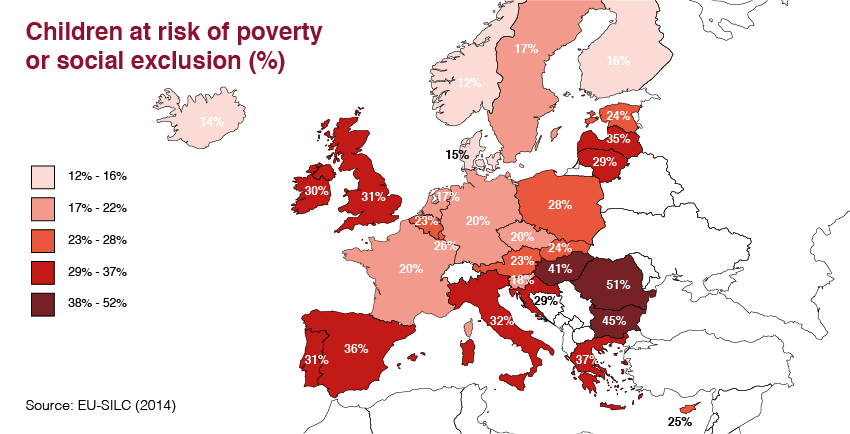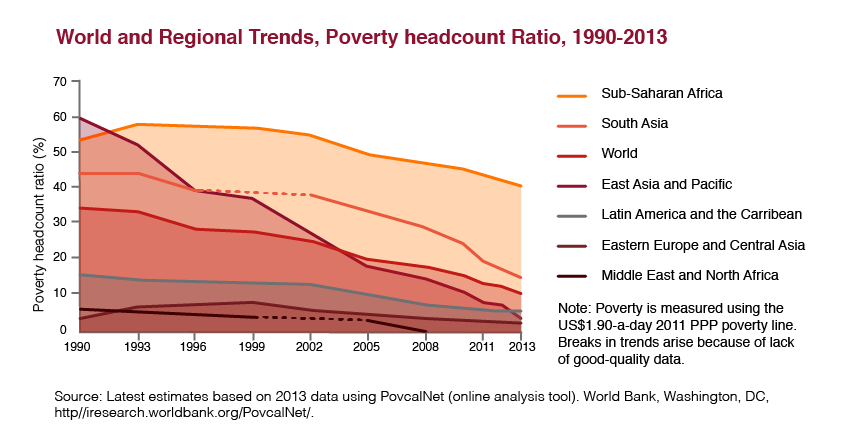04 December 2017
Inequalities & life chances
How to intervene on the correlation between opportunity and socio-economic status
Few people are lucky enough to possess one million dollars, a mere 0.7% of the world’s population in fact. This 0.7%, however, control 44% of the world’s wealth, according to the Global Wealth Report 2014 compiled by Credit Suisse. Some years earlier, in 2008, the United Nations University World Institute for Development Economics Research (WIDER) found that on a planetary level the Gini coefficient that measures wealth inequality was calculated to be 0.89. Taking into account that 0 indicates an absence of inequality and 1 is the absolute maximum, then 0.89 is a startling figure.
The results of these studies, both cited in an article that appeared on the website of the World Economic Forum, are similar to many other studies of this issue and reinforce, if you do the maths, what everybody already knows: economic inequality, over the last three decades has increased more or less everywhere. But what are the effects of this?
A renowned OECD report in 2015, titled “In It Together: Why Less Inequality Benefits All”, cross-checked the data concerning social mobility, human capital and inequality in 31 countries and came to the conclusion that inequality represents the main factor inhibiting growth.
The great German sociologist Max Weber was the first to establish a statistical correlation between opportunity (intended as “life chances”) and socio-economic status: the higher the socio-cultural level of the nuclear family of origin, the greater the opportunities an individual has to improve the quality of his/her own life. According to this outlook, combatting inequality (for example by investing in education) means offering better “life chances” to a wider segment of the population, making society more dynamic and inclusive, reducing collective social costs and, therefore, producing wealth.
International research demonstrates that inequality in child development begins from the moment of conception and the first months of life: differences in parents’ lifestyles count when it comes to health and development in early infancy, so much so as to double the gap between rich and poor children between 9 and 24 months. According to research by Save the Children based on data from the OECD in Pisa, in Italy socio-economic inequality and territorial disparities (between the north and the south) combine to produce inequality not only in terms of health (the effect of eating habits and sporting activities) but also concerning cognitive development, with an impact on fairness and equal opportunities as the child grows, but also on future human capital and life chances. For example, in Italy the geography of juvenile obesity matches the poorest regions, but also the percentage of fifteen-year-olds who do not reach minimum skill levels in mathematics and literacy appears to be split in two: between 37 to 46 % in Calabria compared with 10 to 14% in Lombardy. Social and education policies can correct at least part of this disparity: for example attending nurseries, full day schooling and extra-curricular activities encourages cognitive development and helps to bridge the gap in terms of starting conditions.

For the World Economic Forum the gap between those who have much and those with little generates consequences that are critical in terms of life expectancy, social cohesion, stability and economic sustainability. The same concerns have been expressed by the UN, which includes in in the organisation’s 17 Sustainable Development Goals (SDGs), the objective of SDG number 10 to reduce inequality, with tangible and measurable targets to be achieved by 2030.
Many scholars have reflected on the possible solutions to reduce inequality. Walter Scheidel, professor at Stanford University has studied thousands of years of human history in search of answers, from the Stone Age to the twentieth century in order to understand when and how man has managed to produce fairer societies. The conclusions that he reached are particularly discouraging. The factors that have contributed most to eradicating inequality are the most violent: wars, revolution and pandemics. Some examples occurred in periods not too distant from our own. Soviet and Chinese communism eliminated private wealth (and often also the owners of it) but at an extremely high cost in terms of human lives and human liberty, while social acceptance always remained very low. As Scheidel explains, it has never been easy to find moderate intelligent and flexible strategies to reduce socio-economic disparities.
The Haas Institute for a Fair and Inclusive Society, the think tank linked to Berkeley University, mapped six possible interventions: raising the minimum wage, increasing child benefits, encouraging access to financial services for the less well off, investing in education, progressive reform of the tax system and ending residential segregation, which in the United States is a factor that cannot be ignored. Scandinavian countries, on the other hand, appear to be more virtuous.
A recurring theme is that of the relationship between the market and state. This is an eternal dispute and while in the past it concerned the clash between capitalism and socialism, today it concerns mainly the issue of globalization. For some this is an unstoppable force that, with the contribution of technology, will improve the world. For others, like Joseph Stiglitz, winner of the Nobel Prize for Economics, it must be controlled and limited when necessary and it is the responsibility of political forces to do this.
British economist Tony Atkinson, who died recently, listed fifteen priorities in his book Inequality. What can be done? The sixth is perhaps the one with the greatest impact: it outlined the provision of a minimum capital endowment to be paid to all on reaching adulthood. A critical point made by the libertarian think tank Cato Institute suggested that a transfer of this kind would reduce the productivity of labour. The same reservations have been expressed by those who oppose the idea of a universal basic income, an issue that has been the subject of debate for some time and that has been indicated as a possible remedy for inequality. We discussed the issue some time ago. Another typical strategy is to raise inheritance tax in order to recalibrate the starting conditions.
On the subject of inheritance, a curious choice that has triggered discussion (and some mirth) is that made by extremely rich and famous individuals, from Bill Gates to Warren Buffet to Sting. All of them have chosen not to pass on the vast wealth that they have accumulated to their children. Their motives are not ethical but educational, to give their offspring the responsibility of making the most of their own life and employment opportunities and not to gift them an advantage that in the long term could end up undermining their character.
Beyond the debates of academics and the ideas that circulate in Western countries, it is evident, however, that the real question of inequality and its progression over time concerns mainly the world’s North-South divide.
A report by the World Bank in 2016, “Taking on Inequality”, pointed out that more than one in every ten people in 2013 lived with less than the 1.90 dollars a day that is understood as the poverty line. Half of these people were in sub-Saharan Africa. However, between 2012 and 2013 one hundred million people emerged from this condition and more than one billion people who, prior to 1990 were considered poor, are no longer poor today, in particular in China, Indonesia and India.

The problem, therefore, concerns mainly the continent of Africa. Among the targets fixed by the UN’s 2030 Agenda, many relate explicitly to this theme. This means giving developing countries greater representation in global assemblies, improving policies on immigration, establishing more flexible conditions for trade and tariffs involving poor countries, increasing the flow of investments directed to these areas of the world and reducing by 3% the cost of commissions on remittances by 2030. This latter aspect is particularly relevant: today of the five continents these commissions are highest for the continent of Africa even though they have fallen by 20% since 2011, according to Quartz.
